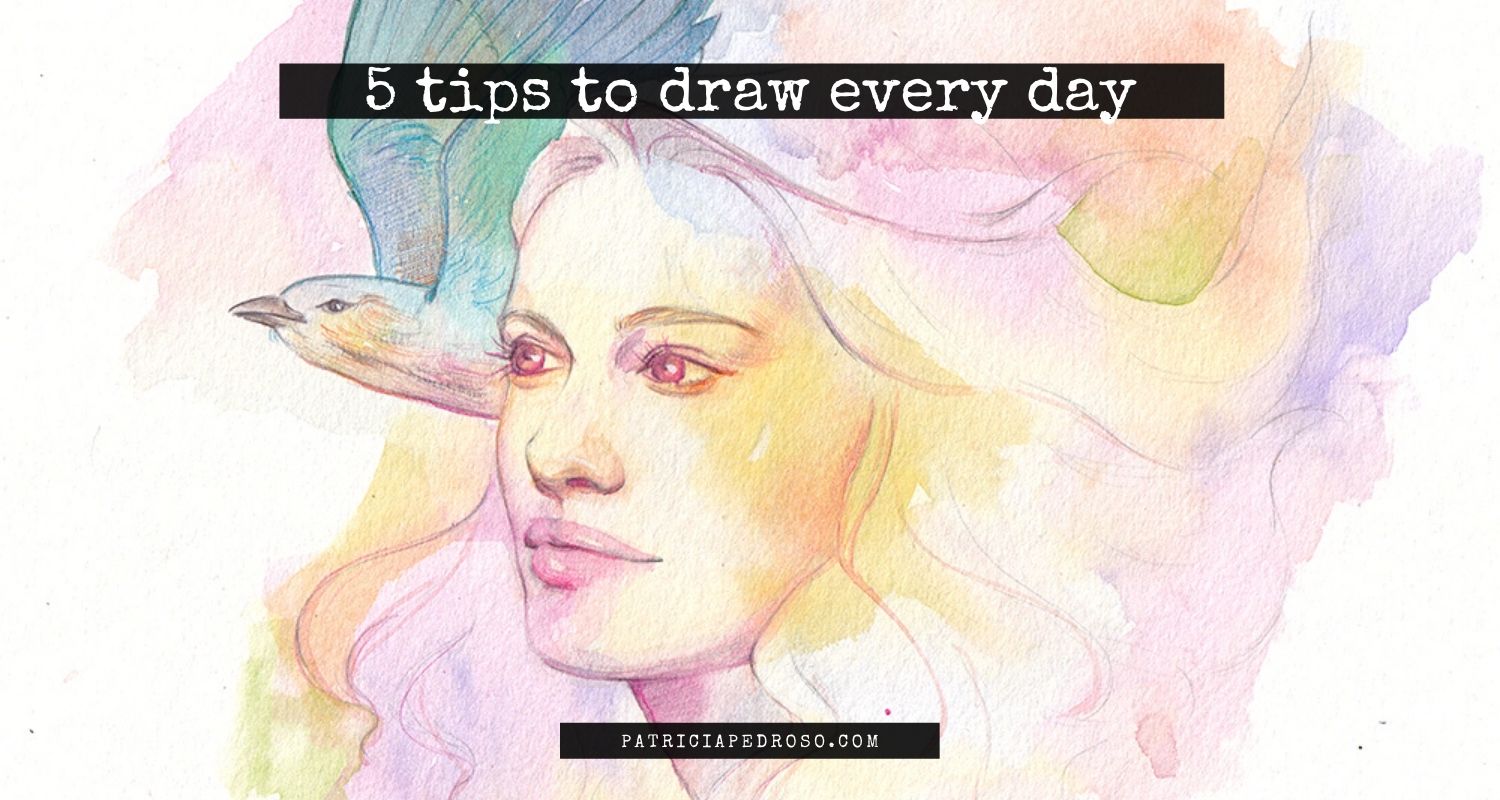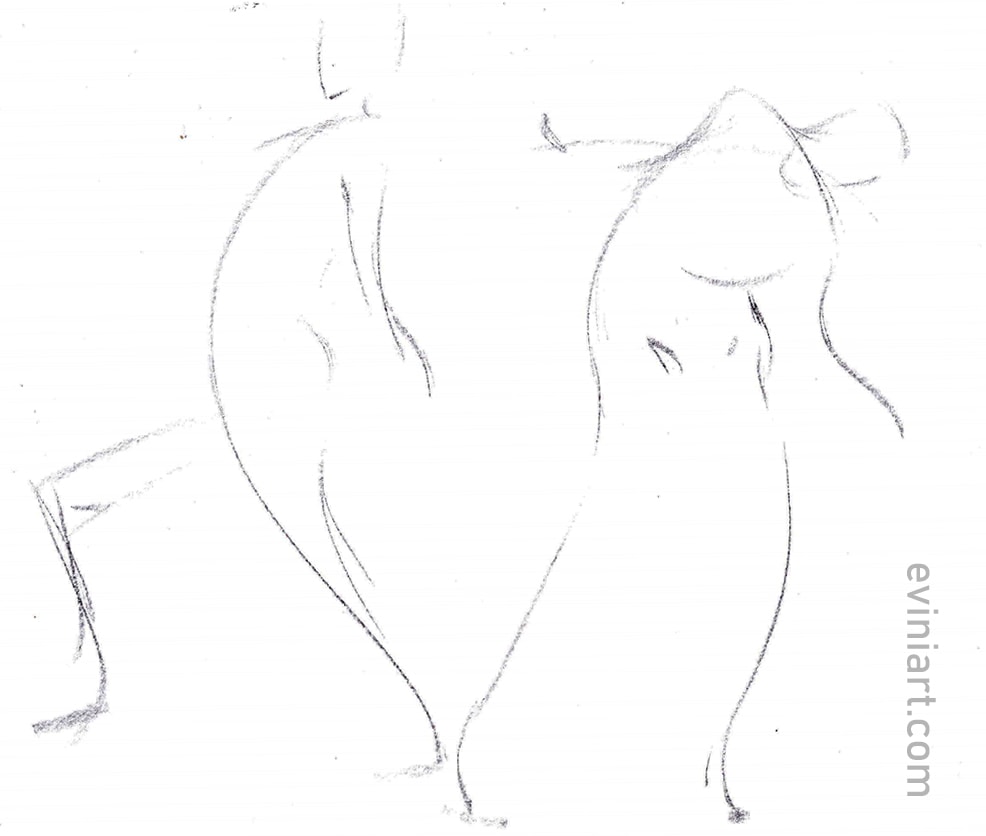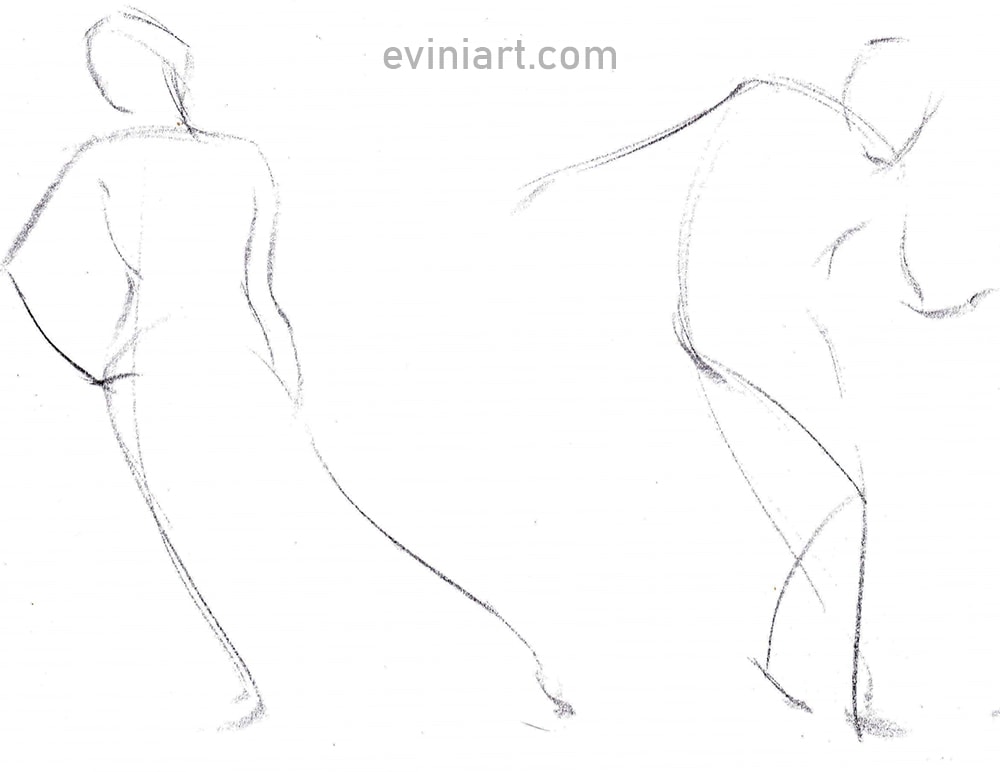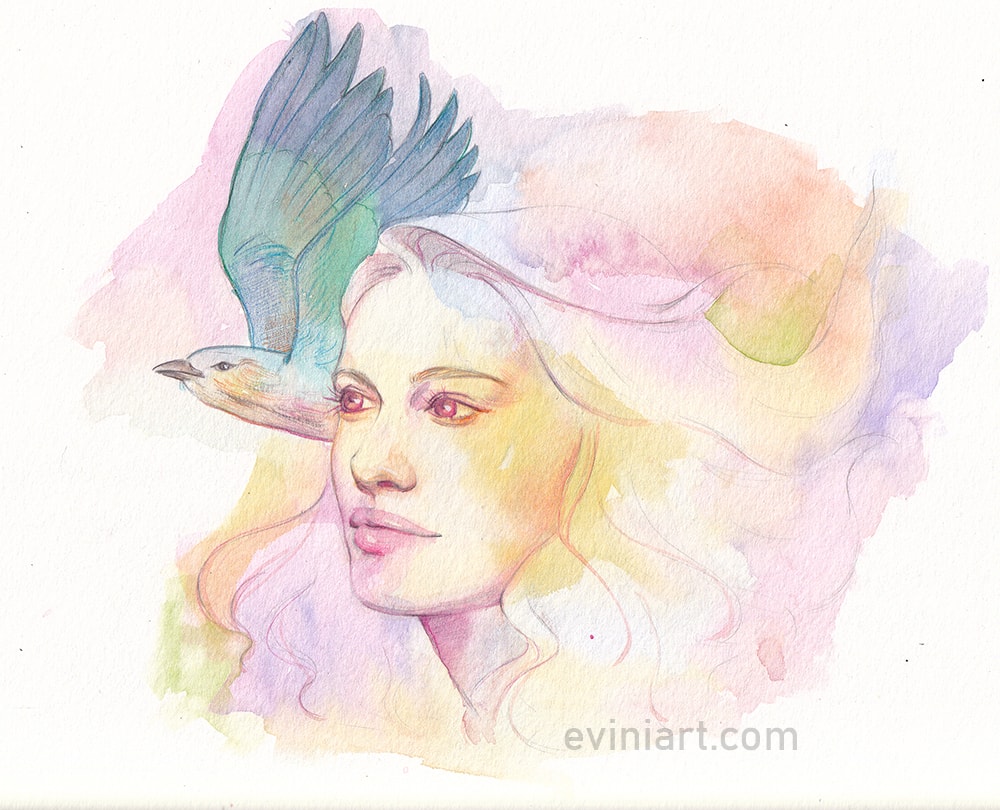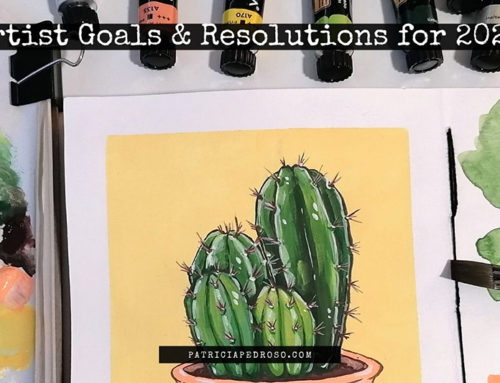Are you struggling to get in the habit of drawing? This post is for you!
Today we have the very first guest post in this blog and it comes from Fae Evini from Evini Art!
Fae has recently started both a blog & youtube channel all about learning to draw by studying smart, that’s an absolute must if you’re starting out with art or you feel like you need a good refresher!
And if you have a post you’d like to submit to the blog feel free to contact me on the form with your ideas!
I don’t believe there’s a single artist who hasn’t struggled – even just a bit – with their motivation to draw, so I believe this post could definitely be game-changing to many of you reading!
Now, let’s get to the post!
*Reminder that this post contains some affiliate links. This means I might get a small commission when you click and buy something with that link with no additional cost to you. However, my reviews and recommended products are not influenced by this, I’ll only recommend what I use and what I believe is good. Click here to read the disclaimer if you want more information*
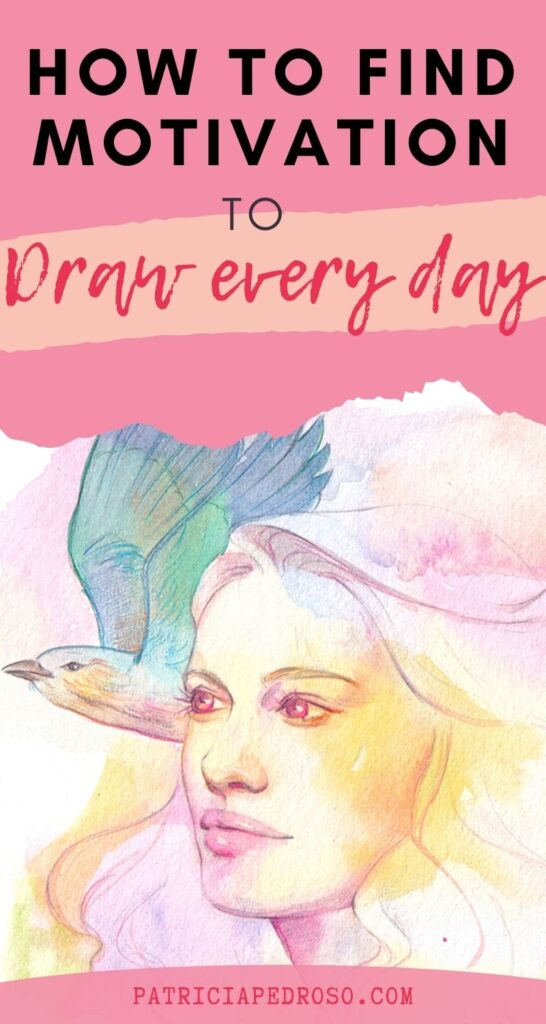

Intro:
In this post, we’ll take a short break from our usual fundamental study to talk a bit about how you get yourself to actually draw and practice all these fundamentals. (Find all of Fae’s learning posts & resources here!)
I know how it’s hard to actually start drawing, let alone do it daily. So, I wanted to make this post to help anyone who’s struggling to maintain the habit of drawing.
I also have a video on this same topic if you’d rather watch it! I talk about the same things in that video, so feel free to choose whichever is best for you.
What is Motivation?
Motivation is that feeling that actually moves you to go and do something.
It seems to appear out of nowhere or maybe when you watch something inspiring, but it’s still overall difficult to evoke it. But is motivation necessary to actually do something? And does it really come out of nowhere?
We’re used to short-term motivation because it’s what we know best. This is the motivation that appears out of nothing or when we watch a motivational video or read a self-help book. However, as the name suggests, it lasts for a very short while and is, thus, unreliable as the main source of willpower to get us to do the things we need to do.
Long-term motivation, on the other hand, is much more stable and is exactly what we need.
It doesn’t come out of thin air, it is a muscle that needs to be exercised. It’s not a feeling that suddenly arrives and then you can draw. Just like how I tell you in every video to study smart by being an active learner, you must also be proactive about keeping your motivation.
When you’re already moving, it’s much easier to keep going. That’s why it’s important to start even if you don’t feel motivated. But isn’t that the whole problem?
You can’t draw because you don’t feel like doing it. So, let’s think for a bit about why it’s so hard to just start.
You’re Attaching Negative Feelings to Drawing
Tell me if any of this sounds familiar: You get upset with yourself for not drawing as much as you think you should. You think “I have to draw”, and when you do draw you think “I have to draw more”. So you force yourself to do more than you can and that makes it tiring and exhausting.
You’re afraid of failing because you want to draw things perfectly, in a way you can’t do yet, so you start feeling demotivated to draw.
If it does sound familiar, then you’re constantly attaching negative feelings to drawing. It’s really no wonder you don’t feel like doing it. Not only that, but we’re also great at making things seem worse than they are.
Our brains keep telling us that it’s going to be so hard, that it’s super difficult and boring and tiring that we lose any will we might’ve had.
So, how do we fight that?
Build the Habit or Routine
If it’s showing up every day that is going to help us bring in the motivation, that means we need to build a habit of drawing every day to make sure it is a part of our routine.
After a while of keeping the habit, it should practically become automatic to draw. You don’t even need to think about it, so you’re not going to have to worry about motivation. You just go and do it because after you wake up, you make some tea and you start doing gesture drawings.
Then, you draw until a certain time and after that, you stop no matter how much you accomplished or if you think you should do more.
This is exactly my routine and I know it might sound like a very simple solution, but I swear it works wonders if you know how to build your routine properly.
Did you notice the key things I implemented into this routine?
I pair it with another habit (making tea), I start with something that is very easy and that I know I can do with my eyes closed (gesture), and then I do it for a certain period of time.
So, let’s talk about each step to see how to build a successful habit.
1. Pair it with Other Habits
I wake up, go to the bathroom, take my meds, make some tea, sit down, and pick my pencil.
That’s just what I do, it’s not something I need the motivation to do. True, some days I don’t feel like doing any of it and stay in bed, and that’s fine. Overall, I’m showing up nearly every day.
So, try to build a sequence of easy habits that lead you to draw.
Maybe it’s something like: you get home from work, take a shower, change into your pyjamas, and pick a pencil. Maybe after breakfast, you check Instagram for inspiration, and then sit down and pick your tablet.
Whatever suits you best.
This works well because going to the bathroom requires zero motivation, taking my meds requires zero motivation, making tea requires zero motivation, and then drawing, by association, requires zero or little motivation also.
2. Start Simple and Know Your Limits
Try having the first drawing task of the day be something very simple that you know you can do. In my case it’s gesture drawing, for you it might be doodling, or drawing a portrait in a specific position.
We all have our comfort zones and start with just that. Then, after you’ve already started drawing, you can go for the more difficult stuff. But be careful not to overwhelm yourself.
Being ambitious and having high goals is, generally, a good thing. However, in the beginning, especially when you’re trying to find the motivation, have tiny goals.
If it’s too difficult, you’re going to lose all motivation because the task is going to seem too daunting, if it’s too easy you don’t feel challenged enough.
Find that sweet spot.
That’s why I always tell you to study in cycles, increasing the difficulty in each step or cycle little by little.
3. Start Small, Stop While You’re Ahead
It might seem like it’s not worth doing just five minutes every day because what are you going to do with just five minutes?
The low time is just a trick, so you should actually do it for the mind game. Five minutes is your cushion you can fall back into when you encounter resistance.
You can try to do more than that per day, but if you’re on very low willpower to draw that day, it’s just five or ten minutes, you can do that. You’ll feel happy after completing the task and you’ll start associating drawing as something that makes you happy rather than frustrated.
Slowly, you can increase the cushion time from five to ten to fifteen to thirty, to one hour. That’s exactly how it went for me.
At first, I could barely focus for ten minutes, it felt like an eternity.
But, slowly, I was able to keep going for much longer.
However, be careful to not continue until you’re burned out, otherwise, you’ll start attaching those negative feelings. Stop while you’re still happy, while you still feel like you can draw more.
4. Cycle Through Topics or Fundamentals
I also recommend breaking down the things you’re going to draw that day into small chunks of time.
Right now, I do fifteen minutes for gesture, forty minutes for figure drawing from reference, and twenty minutes from imagination.
If I were to draw the same thing for over one hour, I wouldn’t be able to.
So, don’t try to do just one thing at once. Even if you want to focus on just figure drawing, separate some time for gesture, then form, then shading or anatomy.
I also wanted to remind you that sometimes it’s okay to not want to do anything. As long as it’s not something that happens all the time, you deserve some rest.
What Now?
Now go ahead and try to create a drawing habit or routine!
Make sure to implement all the things I mentioned here. Feel free to leave any questions down in the comments or let me know how it went for you.
If you thought this post was helpful, please consider sharing it with other artists.
Next week we’ll pick the fundamentals back up again, and the next post is going to be about portrait drawing. (Check out Fae’s blog for all this content!)
Wait, you said 5 tips, where’s the 5th?
Actually, Fae left the last tip on her youtube video on the same topic! As a plus, you can also see her create the lovely drawing we’ve shown up there in the post:
Lastly, I want to thank Fae for this super useful article and encourage you to support her & follow her on her social media, website & youtube channel, because I’m sure you’ll find many things to learn there!
Also, if this article has sparked your curiosity about how to build habits, how to trick your mind & how it works I can’t recommend enough the book Atomic Habits by James Clear. It goes over most of the things Fae mentions here more in-depth, with real examples, explanations and tons of techniques.

